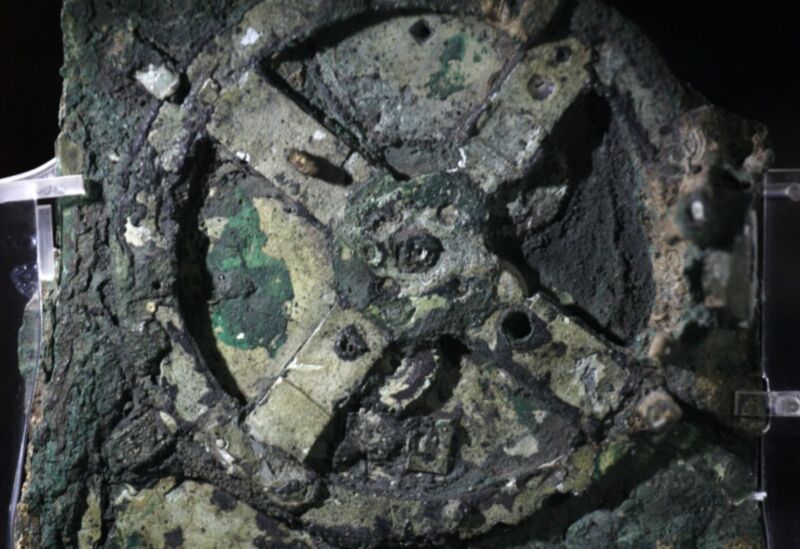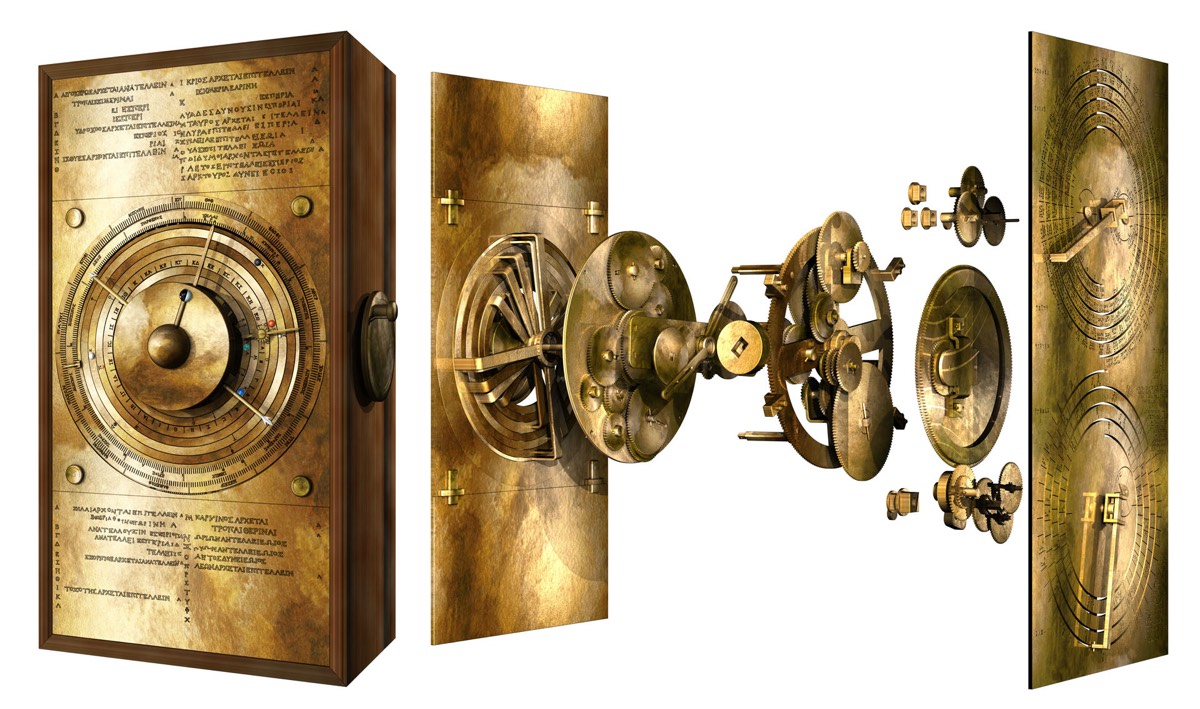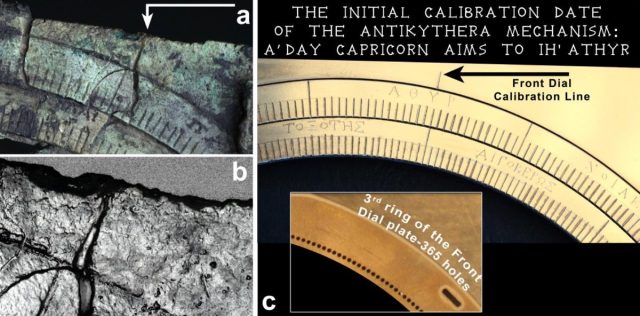
The mysterious Antikythera mechanism—an ancient device believed to have been used for tracking the heavens—has fascinated scientists and the public alike since it was first recovered from a shipwreck over a century ago. Much progress has been made in recent years to reconstruct the surviving fragments and learn more about how the mechanism might have been used. And now, members of a team of Greek researchers believe they have pinpointed the start date for the Antikythera mechanism, according to a preprint posted to the physics arXiv repository. Knowing that "day zero" is critical to ensuring the accuracy of the device.
“Any measuring system, from a thermometer to the Antikythera mechanism, needs a calibration in order to [perform] its calculations correctly,” co-author Aristeidis Voulgaris of the Thessaloniki Directorate of Culture and Tourism in Greece told New Scientist. “Of course it wouldn’t have been perfect—it’s not a digital computer, it’s gears—but it would have been very good at predicting solar and lunar eclipses.”
As we've previously reported, in 1900, a Greek sponge diver named Elias Stadiatis discovered the wreck of an ancient cargo ship off the coast of Antikythera island in Greece. He and other divers recovered all kinds of artifacts from the ship. A year later, an archaeologist named Valerios Stais was studying what he thought was a piece of rock recovered from the shipwreck when he noticed that there was a gear wheel embedded in it. It turned out to be an ancient mechanical device. The Antikythera mechanism is now housed in the National Archaeological Museum of Athens.
In 1951, a British science historian named Derek J. de Solla Price began investigating the theoretical workings of the device. Based on X-ray and gamma ray photographs of the fragments, Price and physicist Charalambos Karakalos published a 70-page paper in 1959 in the Transactions of the American Philosophical Society. Based on those images, they hypothesized that the mechanism had been used to calculate the motions of stars and planets—making it the first known analog computer.

In 2002, Michael Wright, then curator of mechanical engineering at the Science Museum in London, made headlines with new, more detailed X-ray images of the device taken via linear tomography. Wright's closer analysis revealed a fixed central gear in the mechanism's main wheel, around which other moving gears could rotate. He concluded that the device was specifically designed to model "epicyclic" motion in keeping with the ancient Greek notion that celestial bodies moved in circular patterns, called epicycles. (This was pre-Copernicus, so the fixed point around which they moved was believed to be the Earth.)
Last year, an interdisciplinary team at University College London (UCL) led by mechanical engineer Tony Freeth made global headlines with their computational model, revealing a dazzling display of the ancient Greek cosmos. The team is currently building a replica mechanism, moving gears and all, using modern machinery. The display is described in the inscriptions on the mechanism's back cover, featuring planets moving on concentric rings with marker beads as indicators. X-rays of the front cover accurately represent the cycles of Venus and Saturn—462 and 442 years, respectively.
The team's efforts built on Wright's work as part of the ongoing Antikythera Mechanism Research Project, which undertook more advanced 3D X-ray imaging with the help of X-Tek Systems in the UK and Hewlett-Packard, among others. The new images revealed much more of the original Greek transcription, which was subsequently translated. High-resolution X-ray tomography confirmed it was an astronomical computer used to predict the positions of heavenly bodies in the sky. It's likely that the Antikythera mechanism once had 37 gears, of which 30 survive, and its front face had graduations showing the solar cycle and the zodiac, along with pointers to indicate the positions of the Sun and Moon.



3175x175(CURRENT).thumb.jpg.b05acc060982b36f5891ba728e6d953c.jpg)

Recommended Comments
There are no comments to display.
Join the conversation
You can post now and register later. If you have an account, sign in now to post with your account.
Note: Your post will require moderator approval before it will be visible.